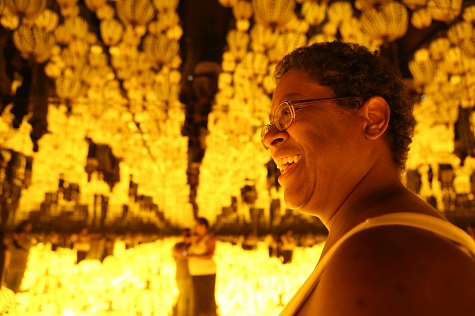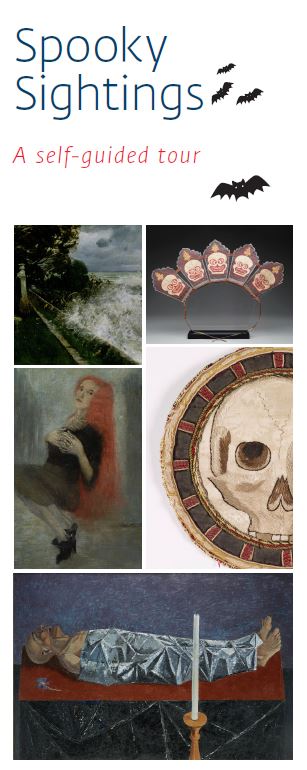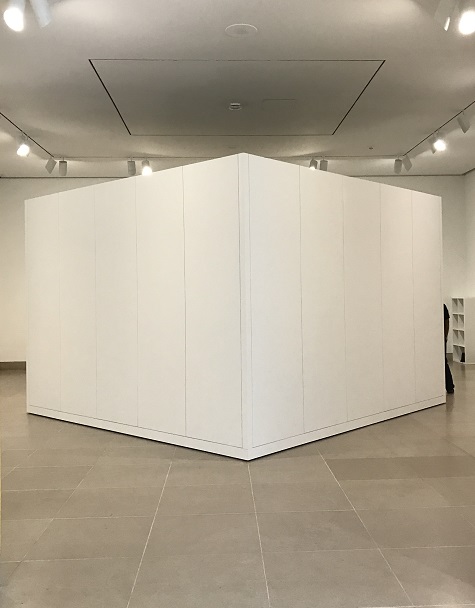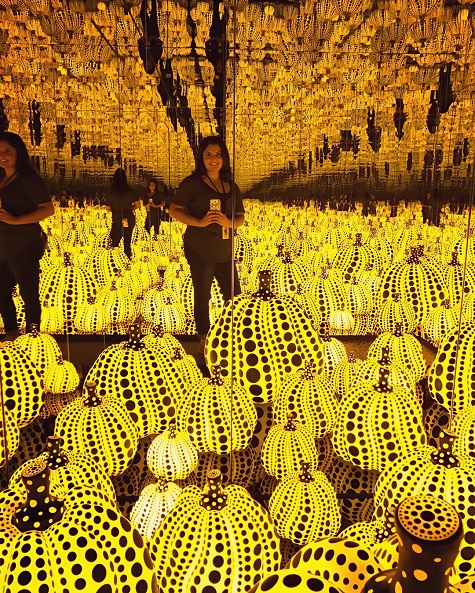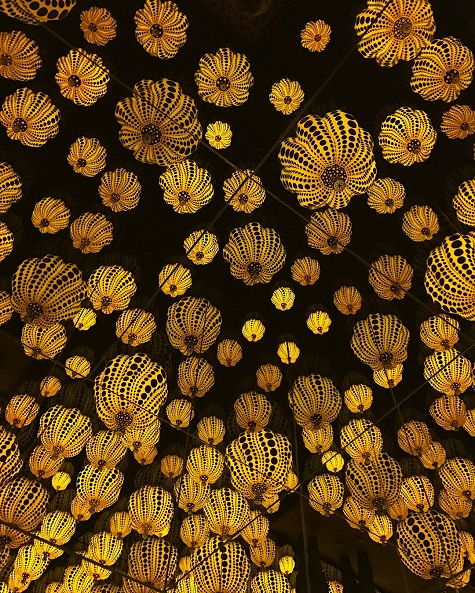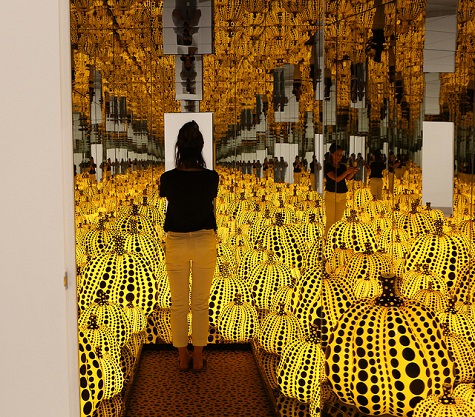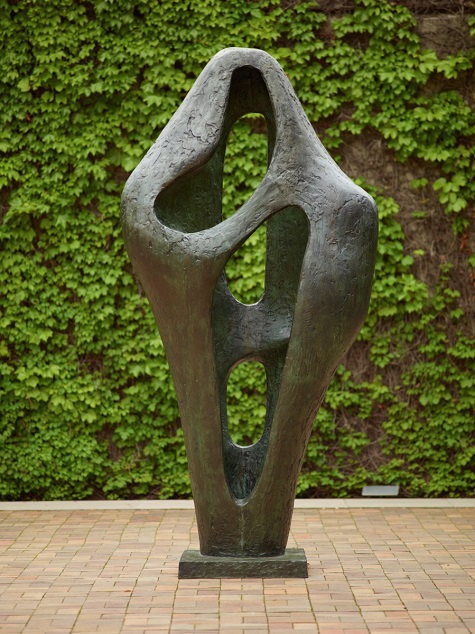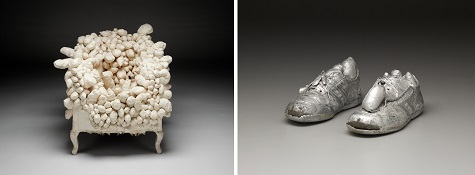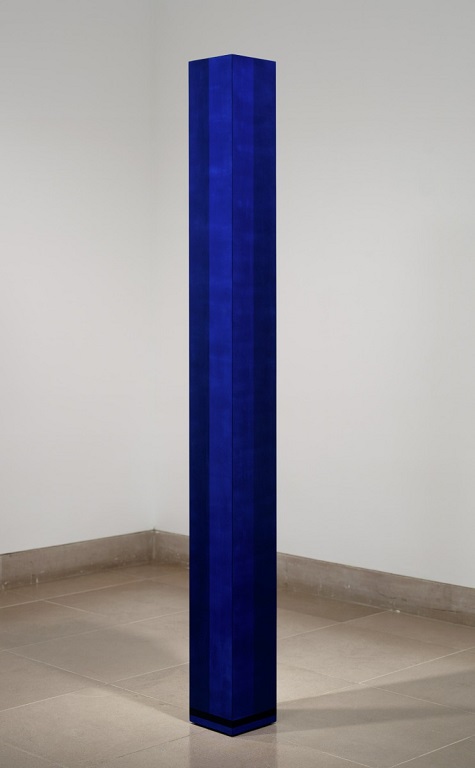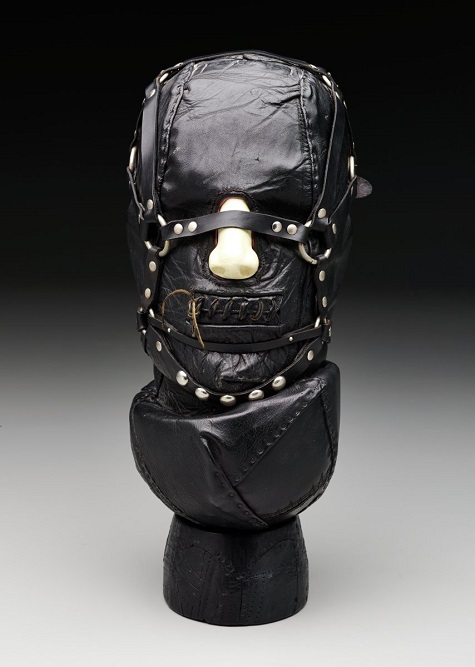It’s the most PAWsome time of the year for DMA pets: National Dress Your Pet Up Day is on January 14. Every year our favorite pups and kitties look to the galleries for inspiration and bring to life works of art for this dog-gone fun day.
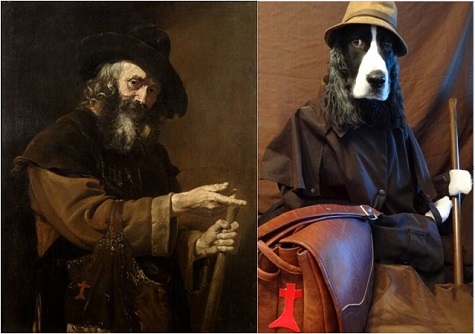
DMA Staffer: Stacey Lizotte, Head of Adult Programming and Multimedia Services
DMA Pet: Parker, English Springer Spaniel, age 4 (he belongs to my parents but I borrowed him when I was home for Christmas)
Portrait Inspiration: This year I picked Old Pilgrim because Parker is really good at giving you all-knowing and wise expressions. I borrowed my dad’s duster and hat and my mom’s purse and used talcum powder on Parker’s ears to make him look older and more distinguished. I believe Parker is very comfortable posing for this yearly event, as he loves all the attention, hugs, and treats.
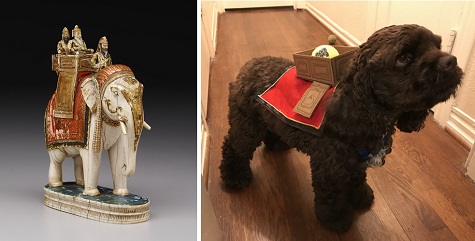
DMA Staffer: Jessica Thompson, Manager of Teen Programs, and Gregory Castillo, Multimedia Producer
DMA Pet: Bastion, Cocker Spaniel, age 11 months
Portrait Inspiration: Although the DMA has wonderful portraits of spaniels in the collection, we looked for a work of art that shares one of Bastion’s best traits: his floppy ears! We made a saddle that tied onto his harness so he could carry one of his favorite toys around; however, we don’t think Bastion was very pleased with this development.
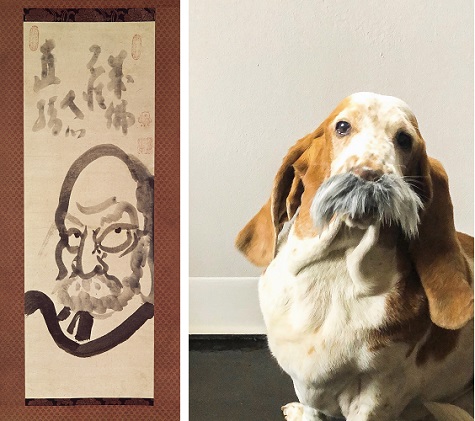
DMA Staffer: Jessie Carrillo, Manager of Adult Programming
DMA Pet: Jenny, Basset Hound, age 7
Portrait Inspiration: Whenever I see this work of art, I’m reminded of Jenny with her long nose, knobby head, and signature expression that is some combination of skepticism, poutiness, and irritation.

DMA Staffer: Dr. Anne R. Bromberg, The Cecil and Ida Green Curator of Ancient and Asian Art
DMA Pet: Miss Suzl, Maine Coon, and Miss Bounce Bounce, Abyssinian
Portrait Inspiration: Suzl is ready to pose for anything and resembles the lively cats in this painting. Bounce loves food and would be happy to raid a larder.
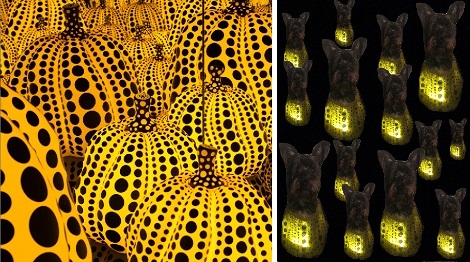
DMA Staffer: Tamara Wootton Forsyth, Associate Director of Collections, Exhibitions, and Facilities Management
DMA Pet: Hamish McTavish, Shelter dog, but definitely some Schnauzer and maybe some Scottie, age 1 1/2
Portrait Inspiration: My step-daughter Katrina Forsyth chose the pumpkins for our work of art, mainly because she loves the experience of the pumpkin infinity room. But also because we love our dog. The work is aptly titled All the Eternal Love I Have for the Hamish McTavish!
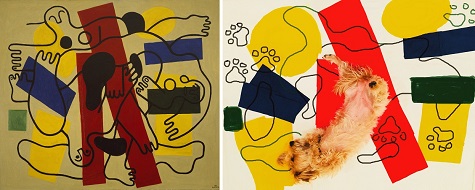
DMA Staffer: Lindsay O’Conner, Manager of Docent and Teacher Programs
DMA Pet: Hattie, Terrier Mix, age 3
Portrait Inspiration: Hattie is known for her lively personality and long, wiggly little body, making her the perfect fit to channel Fernand Léger’s playful, seemingly weightless swimmers. Always happy to be the center of attention and no fan of baths, Hattie needed no encouragement to dive into the felt water-free re-creation of The Divers (Red and Black).
[images: Pietro Bellotti, Old Pilgrim, c. 1660s–1670s, oil on canvas, Dallas Museum of Art, The Karl and Esther Hoblitzelle Collection, gift of the Hoblitzelle Foundation 1987.4; Chess piece, India, Punjab Hills, late 18th-early 19th century, gilt and polychrome ivory, intended gift of David T. Owsley, 64.1996.2; Hakuin Ekaku, Daruma, date unknown, ink on paper, Dallas Museum of Art, General Acquisitions Fund, 1972.1; Frans Snyders, Cats Fighting in a Larder, with Loaves of Bread, a Dressed Lamb, Artichokes and Grapes, by 1620, oil and panel, lent by Mr. and Mrs. Thomas C. Campbell; Yayoi Kusama, All the Eternal Love I Have for the Pumpkins, 2016, wood, mirror, plastic, acrylic, LED, Courtesy Ota Fine Arts, Tokyo / Singapore and Victoria Miro, London, pending joint acquisition of The Rachofsky Collection and the Dallas Museum of Art through the TWO x TWO for AIDS and Art Fund, © Yayoi Kusama; Fernand Léger, The Divers (Red and Black), 1942, oil on canvas, Dallas Museum of Art, Foundation for the Arts Collection, gift of the James H. and Lillian Clark Foundation, 1982.29.FA, © Artists Rights Society (ARS), New York / ADAGP, Paris]
Kimberly Daniell is the Senior Manager of Communications, Public Affairs, and Social Media Strategy at the DMA.
